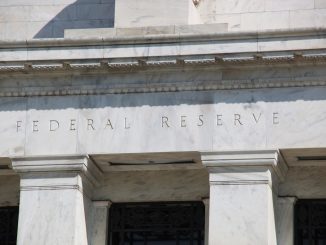Yesterday in my post I reviewed the consequences of QE2 on the Federal Reserve balance sheet.
The bottom line: “The ‘net’ increase in securities held outright by the Federal Reserve has been $589 billion, pretty close to the $600 billion ‘net’ increase promised.
Reserve balances at Federal Reserve banks, a proxy for excess reserves in the banking system, have increased by $584 billion to $1,594 billion over this time period. Actual excess reserves in the banking system averaged $1,610 billion for the two-week period ending June 15, 2011.”
Cash assets (excess reserves) at commercial banks in the United States rose by about $800 billion from December 29, 2010 to June 15, 2011 and closed slightly below $1,870 billion on the latter date.
Basically the Federal Reserve pumped all these reserves into the banking system and there they seemingly sit. Yet, the amazing thing is that of the almost $800 billion increase in cash assets in American banks, almost 85 percent of the increase, or about $670 billion, ended up on the balance sheets of Foreign-related Institutions in the United States.
And, what increased on the other side of the balance sheet?
Net deposits due to related foreign offices. These balances rose by almost $500 billion since the end of last year.
In essence, it appears as if much of the monetary stimulus generated by the Federal Reserve System went into the Eurodollar market. This is all part of the “Carry Trade” as foreign branches of an American bank could borrow dollars from the “home” bank creating a Eurodollar deposit. This Eurodollar deposit could be lent to foreign banks or investors and this would not change the immediate dollar holdings of the American bank. This lending and borrowing in Eurodollar deposits could then multiply throughout the world. And, the American bank might be the ‘foreign-related” institution mentioned above and included in the statistical reports.
Note that the original dollar deposit created by the Fed is still recorded as a deposit at one Federal Reserve bank no matter how much shifting around the borrowing and lending in the Eurodollar market occurs.
Thus, it appears as if the Federal Reserve pumped one-half a trillion dollars off-shore since the end of 2010!
And, this is going to stimulate spending and getting the economy to grow faster?
Cash assets at the smaller banks remained relatively flat over the last six months…and over the last three months. Thus, the reserves the Fed was pumping into the banking system were not going into the smaller banks.
And, although the largest twenty-five banks in the country increased their cash assets by about $130 billion over the last six months, these banks have been reducing their cash balances (by a little more than $30 billion) over the last three months.
What have the domestically chartered commercial banks been doing over the last six months?
Basically, the twenty-five largest domestically chartered commercial banks have been modestly increasing their loans to businesses, both in the three-month period and the six-month period. Commercial and Industrial loans as well as commercial real estate loans have been increasing at the largest banks over the past three-month period.
However, business loans continue to “tank” at the smaller banking institutions. For example, Commercial and Industrial loans at the smaller institutions dropped by almost $5.0 billion from March 30 to June 15. Commercial Real Estate loans took an even bigger hit of almost $35 billion.
Also, at the smaller banks, residential mortgages continue to decline…by a little over $9.0 billion since March 30 and by almost $35 billion over the last six months.
The real lending by commercial banks is not taking place in the United States. The lending is taking place off-shore, underwritten by the Federal Reserve System and this is doing little or nothing to help the American economy grow.
It does seem to help produce inflation elsewhere which gets translated back into the United States in the price of imports.
The Fed has not yet gotten bank lending going, it has not yet caused an increase in the money stock measures, and it has not yet stimulated the economy to any degree.
The Fed may have helped the FDIC close banks in an orderly fashion and it may have helped raise the prices of commodities world-wide.
For all the efforts exerted in QE2, the results are not very encouraging.
- Bulenox: Get 45% to 91% OFF ... Use Discount Code: UNO
- Risk Our Money Not Yours | Get 50% to 90% OFF ... Use Discount Code: MMBVBKSM
Disclaimer: This page contains affiliate links. If you choose to make a purchase after clicking a link, we may receive a commission at no additional cost to you. Thank you for your support!




Well, well, well…
Who’s listening to Ron Paul now? All those people laughing in 2008 are talking out of the other side of their mouths now, huh? Who told you about it YEARS ago?
People are realizing now the Federal Reserve is just a mechanism for stealing money from the poor and middle class through the hidden tax of inflation. Although lately, it’s not so hidden anymore is it? So, they’re stealing every other dollar out of our saving, retirement and stock portfolio accounts to prop up the Euro. Makes sense, if the Euro collapses the dollar is next. BUT, if the Euro just depreciates wildly… so will the dollar and our debt will be a fraction of what it once was. Of course, that doesn’t fix the problem that got us INTO debt in the first place.
If only there were SOMEONE who could lead us out of this keynesian wilderness and onto the path to prosperity… bet you saw it coming… You got to find out more about Ron Paul.